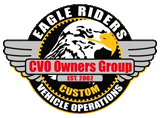Had a late night adult beverage influnced argument with a friend about bore vs stroke and displacement. In you guys opinion which engine would produce the most torque. A 88 to 113, a 96 to 113, or a cvo 110 to 113 all other things being equal? He claims displacement is the same so all measured output would be the same. I call BS Have fun with this one.
With out picking a point for the tq I would say yes all would be in the same range..
113 4 x 4.25 ( we have built those )
113 4.375 X 4.060 yep been there
110 - 113 Yes as well
So being that we have built all of these and tuned them how does one say what is equal. As there where not all using the same head cam compression or even t/b however the final numbers ROM range as side are not too far off.
I went back through and looked as the build they could not be further apart..
SO here goes 88- 113 4 x 4.250 121 HP 125 tq cnc stock 615 rr cam Pipes are Bassani pro streets no baffle
96-113 4.375 X4.060 123 hp 128 tq MVA heads tman 662-1 zilla
110-113 123 hp 129tq CVO heads our cam 58 t/b X pipe
Now this test is not great as it has softail , a dyna and bagger different types of t/b etc but you asked so there you go HA HA The only real change you have is the 88-113 kit that is a big bore short stroke set up. That kit was a revolution kit to come up with that set up. With crap pipes never did see if you could drive the tq up early, as the big bore short stroke engines tend to favor RPM and HP
Do not know if this sis of any help but was fun looking through the old dyno sheets.
 Author
Topic: stroke vs bore (Read 7001 times)
Author
Topic: stroke vs bore (Read 7001 times)

